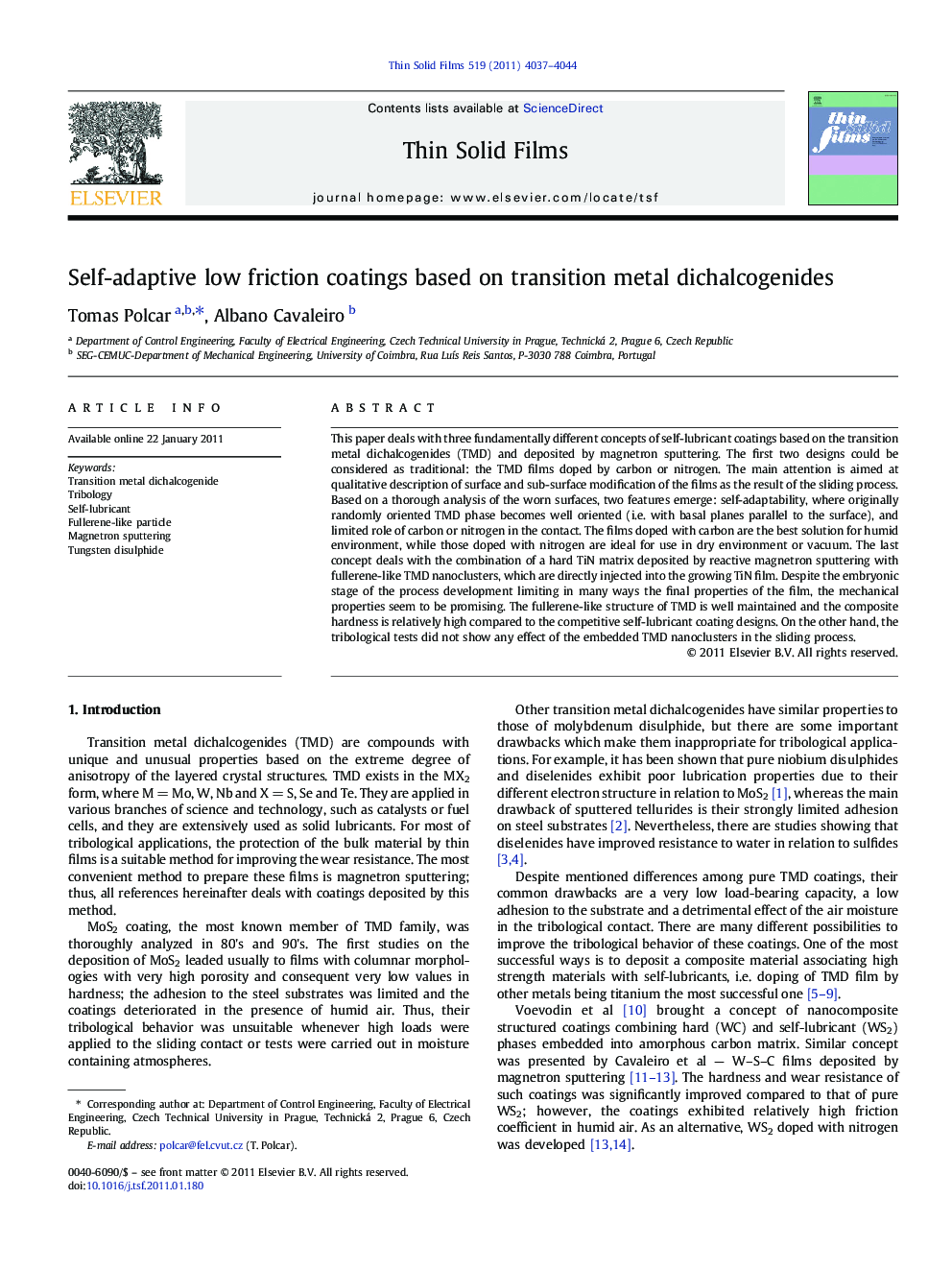| Article ID | Journal | Published Year | Pages | File Type |
|---|---|---|---|---|
| 1667933 | Thin Solid Films | 2011 | 8 Pages |
Abstract
This paper deals with three fundamentally different concepts of self-lubricant coatings based on the transition metal dichalcogenides (TMD) and deposited by magnetron sputtering. The first two designs could be considered as traditional: the TMD films doped by carbon or nitrogen. The main attention is aimed at qualitative description of surface and sub-surface modification of the films as the result of the sliding process. Based on a thorough analysis of the worn surfaces, two features emerge: self-adaptability, where originally randomly oriented TMD phase becomes well oriented (i.e. with basal planes parallel to the surface), and limited role of carbon or nitrogen in the contact. The films doped with carbon are the best solution for humid environment, while those doped with nitrogen are ideal for use in dry environment or vacuum. The last concept deals with the combination of a hard TiN matrix deposited by reactive magnetron sputtering with fullerene-like TMD nanoclusters, which are directly injected into the growing TiN film. Despite the embryonic stage of the process development limiting in many ways the final properties of the film, the mechanical properties seem to be promising. The fullerene-like structure of TMD is well maintained and the composite hardness is relatively high compared to the competitive self-lubricant coating designs. On the other hand, the tribological tests did not show any effect of the embedded TMD nanoclusters in the sliding process.
Keywords
Related Topics
Physical Sciences and Engineering
Materials Science
Nanotechnology
Authors
Tomas Polcar, Albano Cavaleiro,
